Sitting out a winter storm
by Nigel Williams
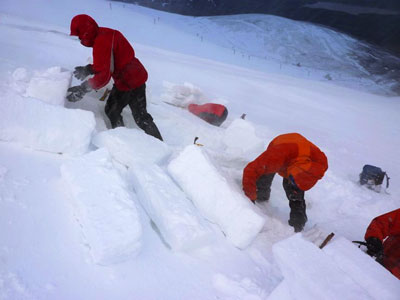
Experiences of serious winter weather conditions cause one to reflect on the reality of making an emergency snow shelter to sit out a storm overnight. At the end of a long day and without overnighting equipment, it is a very different proposition to a planned snowhole experience. I have never had to do it and would rather use my energy to navigate off the hill even if the wind forces me down the wrong side of the mountain. Getting off the tops will reduce the wind and increase the temperature, possibly offer some natural shelter, and below the snow line may be a path and running water. Either moving or digging can keep us relatively warm and psychologically we are doing something positive to escape danger.
Historically there have been cases where solo walkers have successfully resorted to surviving the night in an emergency snow shelter, there are also examples of groups escaping the hill in desperate situations and surviving, almost certainly because they kept moving. I am not aware of anyone failing to survive in an emergency snow shelter but I am aware of a few incidents where people sadly did not make it off the hill. Of course, the vast majority of people try to make it off the hill.
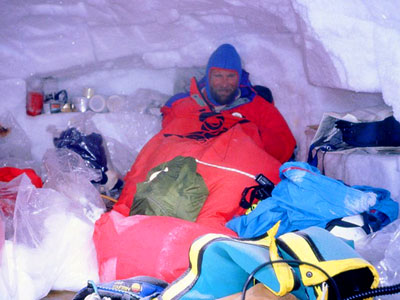
It is easy enough to burrow into a soft snowbank, (assuming you can find one) in 20 minutes with just an ice axe. However, it needs some practice and especially if one is to have any chance of being able to do it at night without a working headtorch. The steeper the bank the shorter the tunnel entrance and the quicker you will be sheltered. Dig a little way up the bank so the discarded snow tumbles away from the entrance. The entrance needs to be as narrow as possible or it will prove very difficult to block up. Being able to cut good large snow blocks with just an ice axe is a really useful skill for blocking up an entrance.
Once in the shelter reality is likely to sink in. Is it possible to just sit there for the next 8 hours or more without becoming hypothermic? Do we carry the clothing, food and drink we would need to be comfortable in that situation at the end of a day? A good piece of insulating mat to sit/lie on, a survival "Blizzard" bag, a group shelter and a cooker and pot to melt snow would make a considerable difference. I usually carry those items year-round and prefer the satisfaction of making a brew with my enamel mug in a sheltered spot during the day rather than carry a thermos. In winter the addition of a snow shovel is always useful.
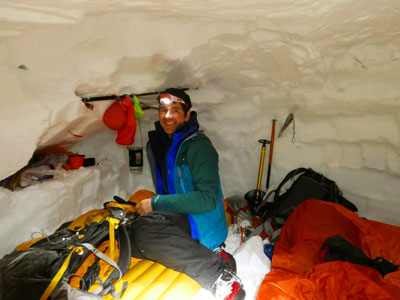
It always comes down to making sound and timely decisions around weather, day light, equipment, the objective, fitness and experience, especially with a group of novices. They may not have the skills to make an effective emergency shelter, navigate or even manage basic things around clothing and equipment. Our first days of winter mountain experience are often huge experiential learning events. We learn to re-adjust our summer perspective of what is achievable in the winter environment.
Day and night vision are essential to winter navigation and safety. Without ski goggles it is virtually impossible to shield your eyes from driving snow crystals. With short days and often slow going in soft snow, an effective head torch is essential (rechargeable from a power bank is good).
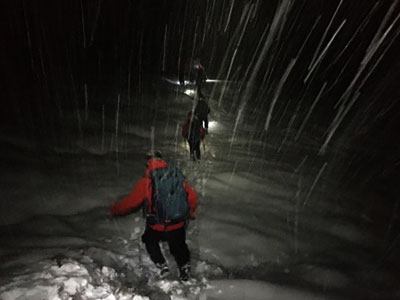
Navigation in these conditions is a feat of multi-tasking involving contour map reading skills and feeling the ground, following a compass bearing and keeping track of the distance covered by pacing or timing and a high degree of confidence. Having digital mapping and GPS makes this task massively easier so long as one can manage the device and interpret map contour information in relation to the winter environment.
Whether to navigate to get out of the situation or stop to make an emergency shelter is a really serious, potentially life or death decision to make. It will depend on many factors at the time and there is no simple guideline. Planning, Preparation, Practice, and Progressions can play a significant role in avoiding ever having to make that decision.
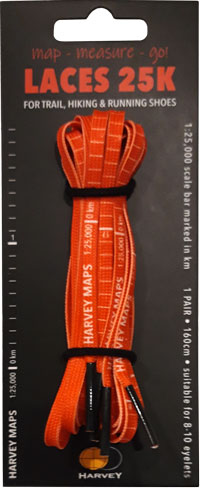
- If you are in need of a compass then we stock a great range of items and other useful navigation equipment, suitable for all levels of navigation.
- For the perfect lanyard to go with your compass, the HARVEY Map - Measure - Go! scale bar laces double up to make measuring distance easy! Available in two scales, 1:25,000 scale markings (red) and 1:40,000 scale markings (yellow).
Return to the Navigation Blog
 FREE UK delivery
FREE UK delivery For Christmas delivery information
For Christmas delivery information 







